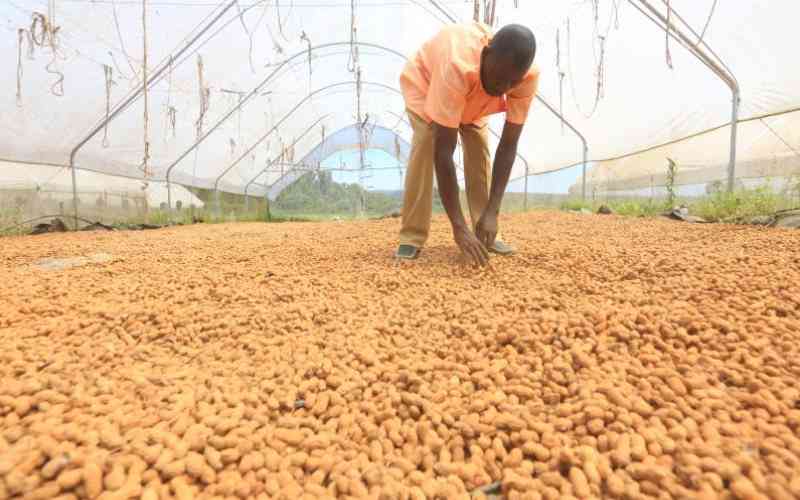×
The Standard e-Paper
Informed Minds Prefer The Standard

Groundnuts inside a green house [Collins Oduor, Standard]
Call it peanut, groundnut or a monkey nut, these small, oval shaped nuts were perhaps one of the first few domesticated grain legumes by mankind.